social learning
Project: Social learning during ontogeny
Do pups follow their mothers on foraging flights?
Rose A, Tschapka M, Knörnschild M (2020) Visits at artificial RFID flowers demonstrate that juvenile flower-visiting bats perform foraging flights apart from their mothers. Mammalian Biology, 100:463–471.
Following their mothers during foraging flights should represent a valuable option for juveniles to socially learn about foraging, e.g., where to find resource-rich foraging patches. However, explicit tests are scarce, and evidence for communal or independent foraging of mother-pup pairs in some species is mainly based on partially anecdotal reports with rather vague methods.
In this project, we used a novel approach to investigate the early foraging behavior of free flying flower-visiting bats (Glossophaga soricina). In a dry forest in Costa Rica, we trained mothers and pups to feed from artificial flowers with a RFID reading system and, subsequently, conducted a field experiment to test whether RFID-tagged mothers and pups visit these flowers communally or independently. Unexpectedly, pups often encountered and visited artificial flowers near the day-roost, while mothers rarely did, suggesting that they foraged somewhere further away. Our results demonstrate that still nursed juveniles perform foraging flights apart from their mothers and might learn about the spatial distribution of food without participating in their mother’s knowledge, for instance by following other conspecifics or applying individual learning strategies.
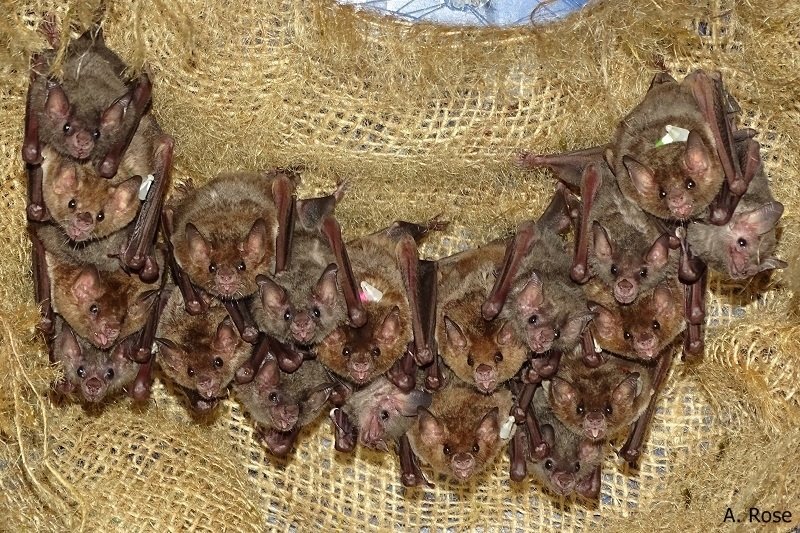
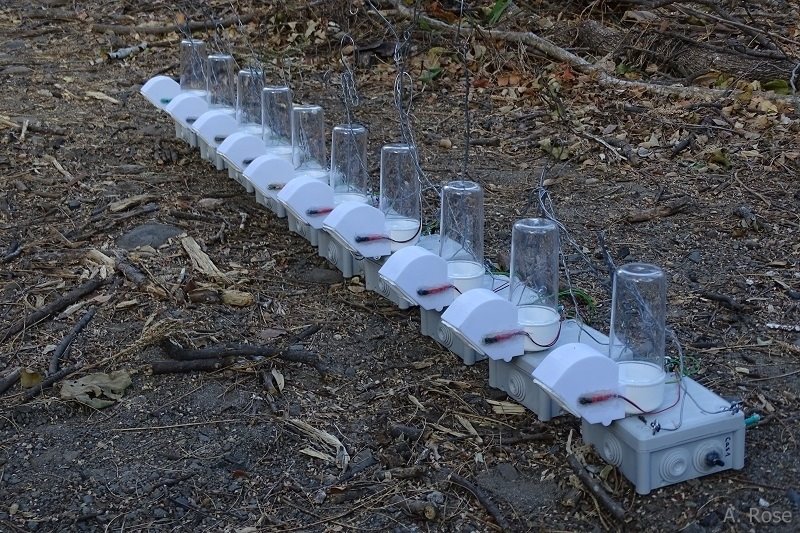
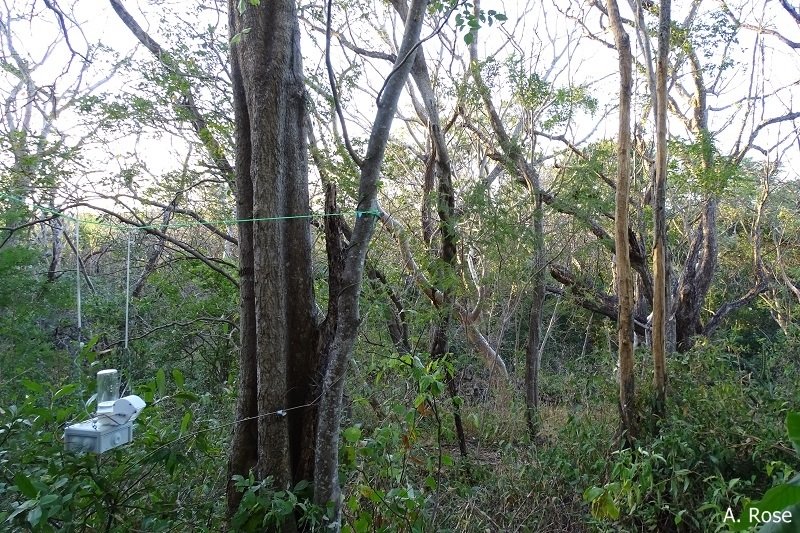
Project: Social learning during ontogeny
Do pups use maternal mouth-to-mouth feeding behavior to learn about food cues?
Rose A, Wöhl S, Bechler J, Tschapka M, Knörnschild M (2019) Maternal mouth-to-mouth feeding behaviour in flower-visiting bats, but no experimental evidence for transmitted dietary preferences. Behavioural Processes, 165:29-35
In addition to breast milk, several mammals feed their offspring with primary food items. This provisioning can offer both energetic and informational benefits: young might use parentally provided food as a source of nutrients, but also as a valuable option to socially learn about adults’ food. For bats, there are only very few and partially anecdotal reports of adults feeding their pups with primary food, and there is also a lack of information about social learning processes during ontogeny.
In the present study, we provide experimental evidence that lactating flower-visiting bats (Glossophaga soricina) provide regurgitated nectar via mouth-to-mouth feeding behaviour to their pups. After licking at their mothers’ slightly opened mouth, pups defecated a marker substance that was exclusively available in the mothers’ nectar diet. We additionally investigated associated informational benefits by testing for a social transmission of dietary preferences. We experimentally induced a dietary preference for specifically flavoured nectars to mothers with non-volant pups. Subsequently, after pups became volant, we tested their dietary preferences in a choice experiment. However, we found no experimental evidence that pups adopted the preferences of their mothers.
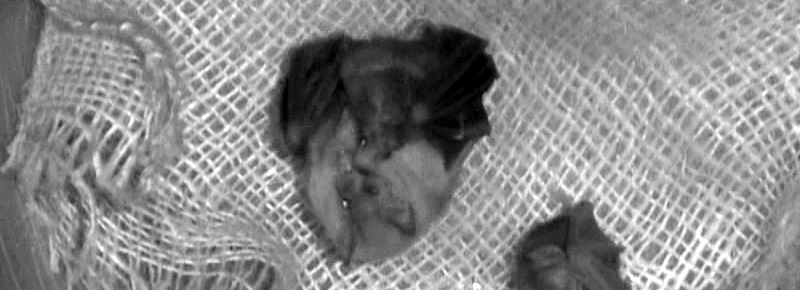
Videos of maternal mouth-to-mouth feeding behavior can be found here.
Social learning in adults
Learning where to feed
Rose A, Kolar M, Tschapka M, Knörnschild M (2016) Learning where to feed: The use of social information in flower-visiting Pallas’ long-tongued bats (Glossophaga soricina). Animal Cognition, 19:251-262
In an experiment with captive G. soricina at the University of Ulm, we demonstrated that flower‐visiting bats (Glossophaga soricina) readily use social information gained from interactions with knowledgeable conspecifics to find rewarding flowers in an artificial flower‐field. This social transmission of knowledge reduces the high energetic costs of searching for flowers and thus constitutes an attractive alternative to individual (i.e. trial‐and‐error based) learning in foraging bats.
In the experiment, focal bats had to find one rewarding flower among 15 unrewarding flowers in three different situations:
(1) trial-and-error situation (focal bat alone): The naive focal bat (marked by a reflective stripe) has to apply a trial-and-error based individual learning strategy to find the rewarding flower position (green circle) among 15 unrewarding flowers.
(2) social facilitation situation (focal bat + naive conspecific): the focal bat (marked by a reflective stripe) and a naive conspecific searching for the rewarding flower position (green circle)
(3) social transmission situation (focal bat + demonstrator bat): Hovering flight of a trained demonstrator bat attracts focal bat (marked by a reflective tape) to the rewarding flower (green circle). The focal bat is hanging at the ceiling, but performing a flower approach towards the rewarding flower after the demonstrator bat was feeding. The focal bat first tries to feed from the rear side, than landing at the rewarding flower and finally feeding while hovering in front of the flower. The focal bat had performed several unsuccessful feeding attempts at unrewarding flowers before.
Search effort (i.e. number of unsuccessful flower visits) was significantly reduced in the social transmission situation. Focal bats socially learned about the rewarding flower position most likely as a result of local enhancement…
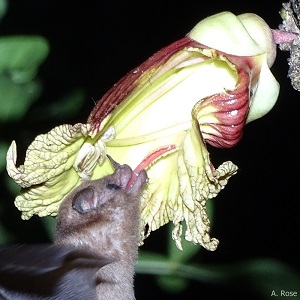


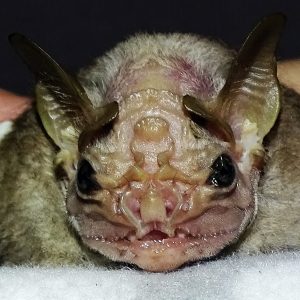
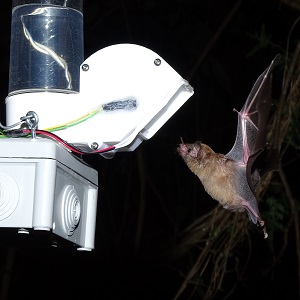

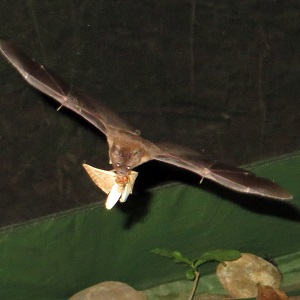
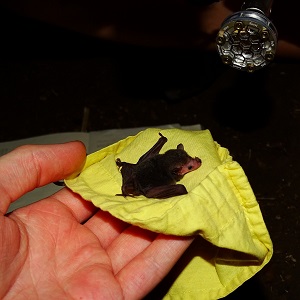
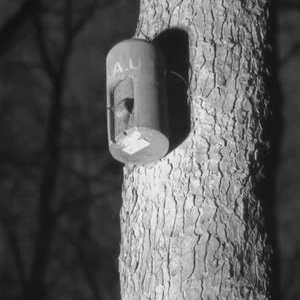
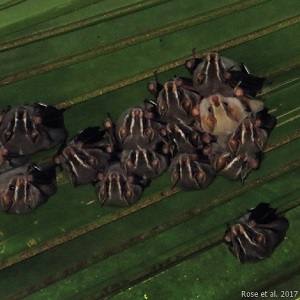




 ORCiD
ORCiD